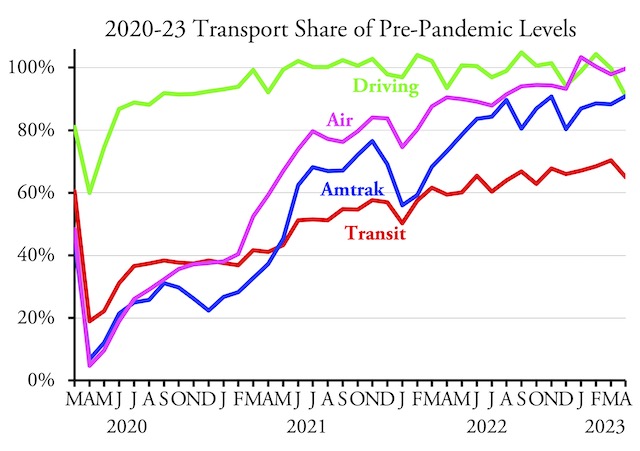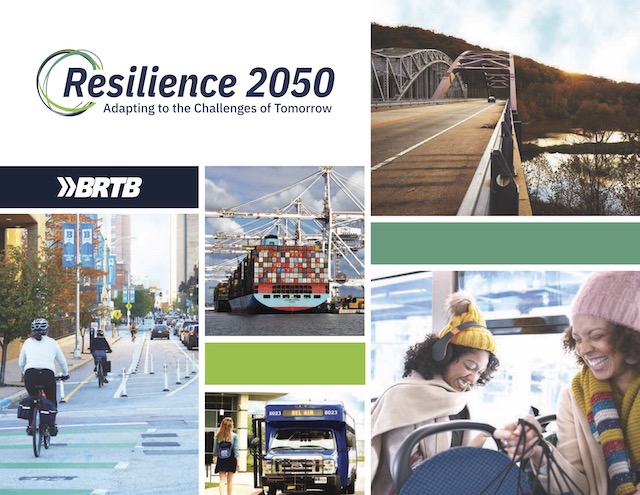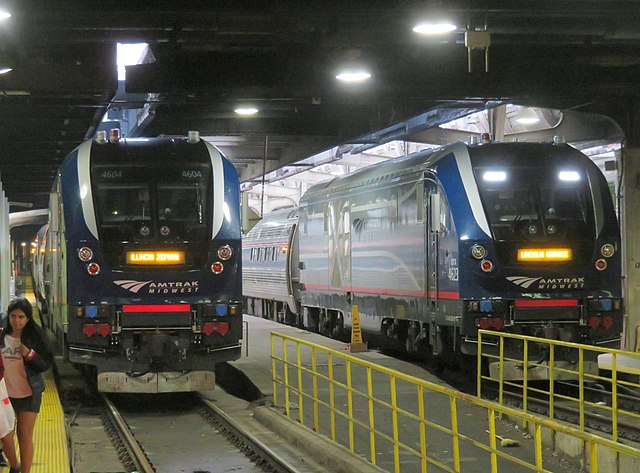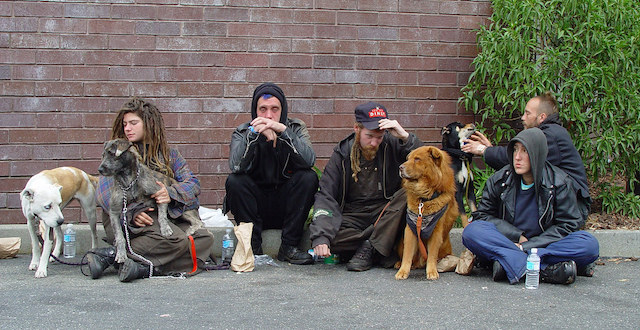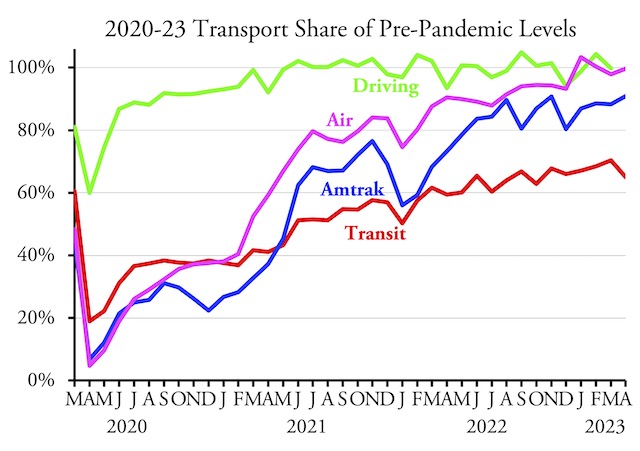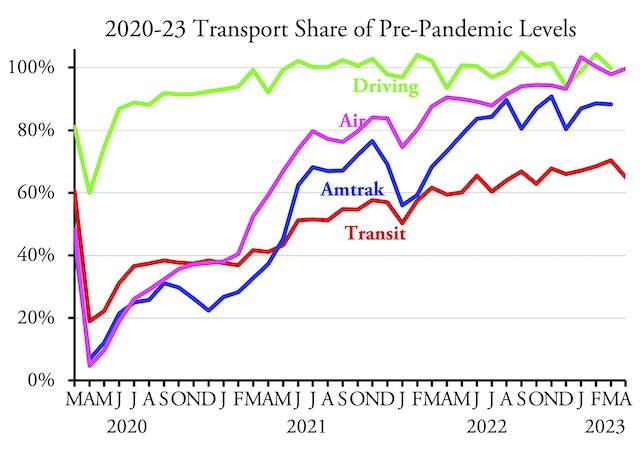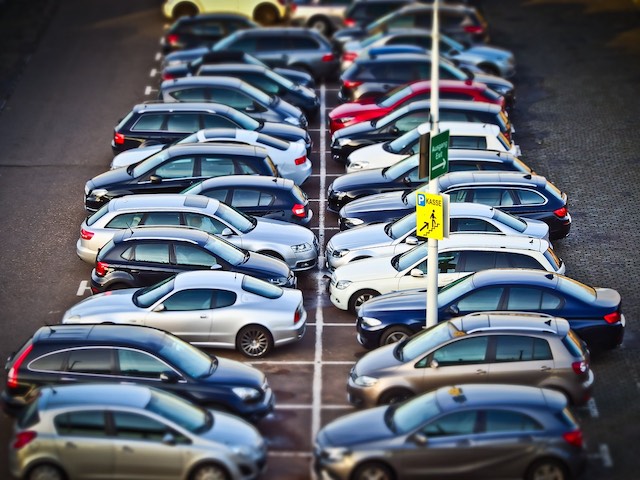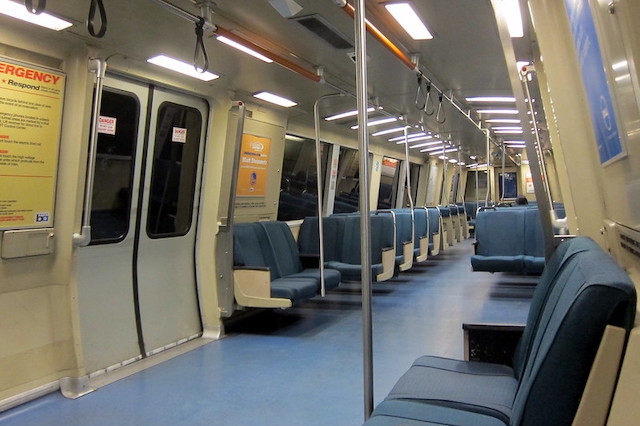Americans drove 91 percent as many miles in April 2023 as they did in the same month in 2019, according to data released by the Federal Highway Administration yesterday. Relative to before the pandemic, driving hasn’t been this low since August 2020.
See last Wednesday’s post for a discussion of transit and air travel and last Thursday’s post for a discussion of Amtrak travel.
As I pointed out last week, April 2023 had two fewer business days than April 2019. But the number of business days seems to have less of an effect on driving than on transit. After all, commuters make up at least 40 percent of transit ridership but less than 20 percent of vehicles on the road. Driving in February, which has the same number of business days each year, was 104 percent of 2019 while driving in March, which had two more business days than in 2019, was 100 percent of 2019. Continue reading

